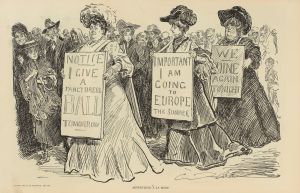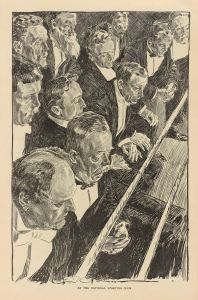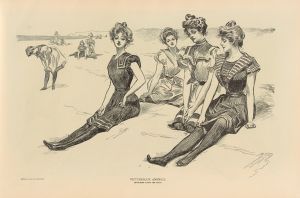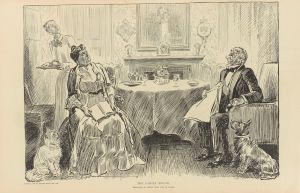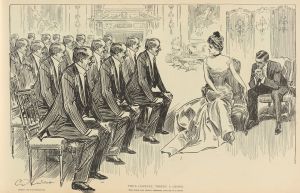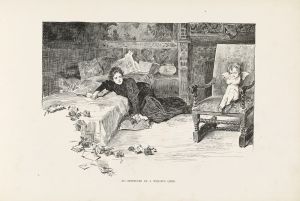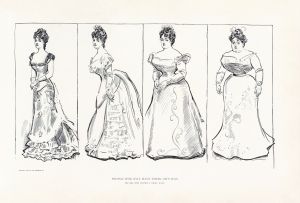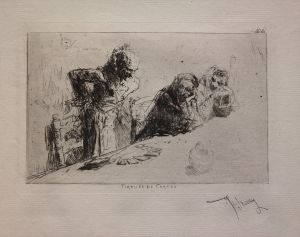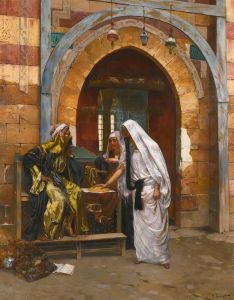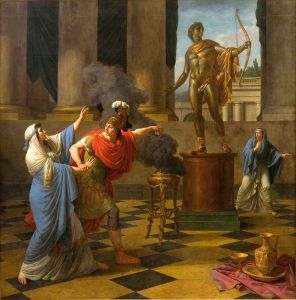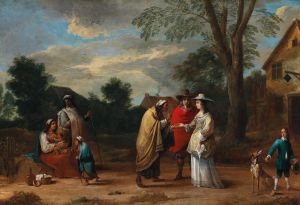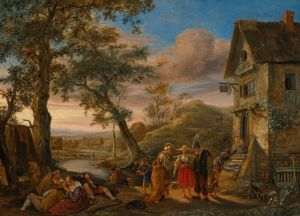
Of course you can tell fortunes with cards
A hand-painted replica of Charles Dana Gibson’s masterpiece Of course you can tell fortunes with cards, meticulously crafted by professional artists to capture the true essence of the original. Each piece is created with museum-quality canvas and rare mineral pigments, carefully painted by experienced artists with delicate brushstrokes and rich, layered colors to perfectly recreate the texture of the original artwork. Unlike machine-printed reproductions, this hand-painted version brings the painting to life, infused with the artist’s emotions and skill in every stroke. Whether for personal collection or home decoration, it instantly elevates the artistic atmosphere of any space.
Charles Dana Gibson was an influential American illustrator, best known for creating the iconic "Gibson Girl," a representation of the idealized American woman at the turn of the 20th century. His work was widely published in magazines such as Life, Scribner's, and Harper's, and he played a significant role in shaping the visual culture of his time.
"Of course you can tell fortunes with cards" is one of Gibson's illustrations, showcasing his characteristic style and wit. While specific details about this particular illustration are limited, it is consistent with Gibson's broader body of work, which often depicted scenes of social life, romance, and the interactions between men and women. His illustrations were known for their humor, elegance, and keen observation of societal norms and behaviors.
Gibson's illustrations typically featured pen and ink, allowing for precise lines and detailed expressions. This technique was well-suited to the reproduction processes of the time, ensuring that his work could be widely disseminated in print media. The "Gibson Girl" became a cultural phenomenon, representing a new standard of beauty and independence for women. She was often portrayed as confident, stylish, and somewhat aloof, embodying the changing roles of women in society during the late 19th and early 20th centuries.
In "Of course you can tell fortunes with cards," Gibson likely employed his signature style to explore themes of curiosity and social interaction. Card reading, or cartomancy, has a long history as a form of fortune-telling, and it would have been a familiar concept to Gibson's audience. The illustration may depict a scene where characters engage in this practice, reflecting the era's fascination with mysticism and the supernatural.
Gibson's work was not only popular in his time but also influential in the development of American illustration. His ability to capture the nuances of social dynamics and his contribution to the visual representation of women have left a lasting legacy. The "Gibson Girl" became a symbol of the Progressive Era, a time of significant social change in the United States, and Gibson's illustrations continue to be studied for their artistic and cultural significance.
Overall, while specific information about "Of course you can tell fortunes with cards" is limited, it can be appreciated as part of Charles Dana Gibson's larger oeuvre, which offers insight into the social and cultural landscape of his time. His work remains a testament to the power of illustration in shaping public perception and reflecting societal values.






